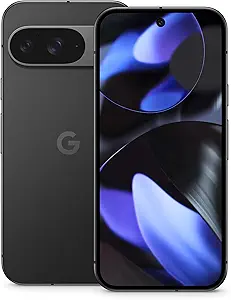Google’s Willow chip is making waves in the tech community with a quantum leap that could redefine the very fabric of computing. Not only does it raise the bar for quantum chips but it also hints at a future where the limits of classical computing are shattered. Let’s dive into why this quantum marvel is the talk of the town and the skepticism it faces.
Exploring the Weird World of Quantum
In the realm of quantum computing, the usual rules of classical computers don’t apply. Imagine qubits as the parallel-spinning superheroes of data processing, far removed from ordinary 1s and 0s. These quantum bits can exist in multiple states at once, unlocking unprecedented computational possibilities. It’s not just a new way of computing—it’s a dramatic shift in how we understand and interact with the digital world. The most significant hurdle? High error rates. Quantum computations are notoriously delicate, akin to juggling live grenades, with high error rates long obstructing scalability and reliability in quantum tech. This is where Google’s latest innovation shines brightest. By emphasizing error correction, they aim to create a future where quantum computing can be as reliable as its classical predecessors. Willow symbolizes hope and ambition in a field riddled with challenging complexities, potentially marking a turning point in quantum technology and offering a glimpse into a new era of digital capabilities.
Unpacking the Willow Chip
Willow is no ordinary chip. Packing 105 qubits into its cutting-edge architecture, it’s a marked improvement over Google’s previous Sycamore chip. What sets Willow apart is its ability to achieve “below threshold” error rates—the holy grail of quantum error correction as proposed by Peter Shor back in 1995. It’s been the stuff of dreams for nearly three decades. Performance-wise, Willow stands as a heavyweight champion of computations, completing a task in five minutes that would leave the world’s top supercomputer puzzling for 10 septillion years—an eye-popping period that’s 10 quadrillion times longer than the age of the universe. Now that’s something to make your jaw drop. This performance showcases Willow’s capabilities alongside the tremendous potential quantum computing must offer, capable of solving problems deemed impossible just a short while ago and emphasizing a leap toward achieving feasible quantum systems that could tackle the challenges of tomorrow’s digital landscape.

Shaping the Future of Various Industries
Unlocking the potential of quantum computing isn’t merely about breaking records; it’s about reshaping industries. Picture seismic shifts in fields like materials science and cryptography, where complex problems could soon be unraveled with the power Willow offers. Industries such as pharmaceuticals might benefit from accelerated drug discovery opportunities, while cybersecurity could experience a profound transformation, leading to new encryption methods that are robust against emerging digital threats. Google isn’t resting on its laurels either. Their roadmap is focused on transforming physical qubits into logical ones, a significant leap toward consistent and reliable quantum computations. Julian Kelly, director of quantum hardware at Google, puts it aptly: “What we’ve been able to do in quantum error correction is a really important milestone for the scientific community.” The pursuit of a stable quantum future isn’t just a dream; it’s increasingly becoming a reality as innovations like Willow lead the charge, proving that significant advancements in technology often spur unexpected benefits across numerous fields.
The Community Conversation Around Quantum Advancements
The buzz around Willow isn’t just about specs and stats. It’s about how the community reacts. Enthusiasts on forums like Hacker News are quick to showcase their excitement alongside a healthy dose of skepticism when faced with claims of revolutionizing tech overnight. The emotions surrounding such innovations highlight a passionate discourse in emerging technologies. A vibrant dialogue emerges, where tech enthusiasts dissect the implications of such innovations while considering the balance between expectations and realities. Hype is inherent in technological advancements, often cloaked in promises that are more sizzle than steak. Yet, in Willow, many see a flicker of tangible progress amid the usual tech hyperbole. The discussions reveal a community eager for innovation but grounded by the lessons of past promises that didn’t come to fruition. This balance of hope and caution is vital as we navigate the uncharted waters of quantum technology, fostering a community that desires not just remarkable advancements but practical applications that can transform our lives.
Envisioning a Quantum Future
As we stand on the precipice of potentially limitless computing power, Google’s Willow chip marks a critical step toward truly harnessing quantum power. Whether you’re a techno-optimist or cautiously realistic, the strides made by Willow compel us all to ponder the future of computing. The implications are immense and may change everything from personal computing to societal infrastructure. Stay tuned and keep an eye on quantum developments. Who knows, the next big breakthrough might just be lurking around the corner—and it will be one that no classical computer can even begin to contemplate. Embrace the journey into quantum computing as we witness the next chapter unfold in the saga of technology, reminding us that in the ever-evolving narrative of human innovation, we are all part of an exciting collective adventure.










